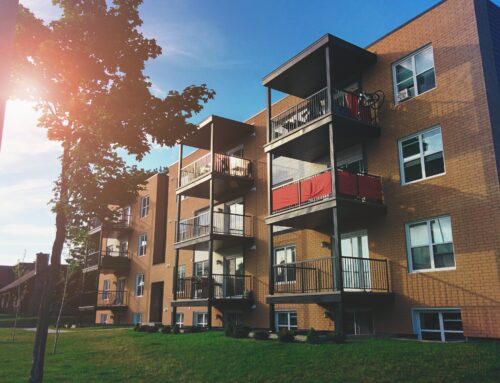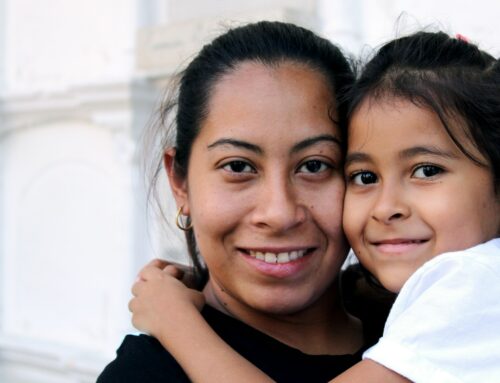In the United States, and throughout the world, people look to Canada as an exemplar for effective, universal healthcare coverage. Before moving to a new country, one of an immigrant’s chief concerns will be understanding the healthcare system in that country and how it will work for them as a newcomer. Yes, Canada takes the health and well-being of its population very seriously. But as a new or temporary resident of Canada, what kind of healthcare coverage can you expect, and at what cost? Let’s take a look at Canadian healthcare for immigrants.
An Overview of Canada’s Healthcare System
In Canada, healthcare is managed and administrated at a provincial level. For most of the country, however, Canada has a fairly standardized health system. The biggest difference is in Quebec, which often marches to the beat of its own EKG. To learn more about those differences, you may want to visit our various articles on the Quebec Healthcare System, Quebec Health Services and Quebec’s RAMQ Health Card. We also have more details on Canada’s provincial healthcare programs later in this article.
Like most developed countries on earth, Canada’s population does enjoy universal care. This means that every Canadian citizen and permanent resident is required to obtain health insurance, either through the government or from a private provider. The cost and terminology may vary slightly from province to province, but the health insurance program or medical insurance plan is typically funded through public taxation.
Here’s a brief rundown of who is eligible for public health insurance, what it covers, and how to apply. (Keep in mind, some details may vary between provinces).
Healthcare Eligibility
To be considered a resident, and therefore eligible for health insurance, you must meet these conditions:
- A citizen of Canada or permanent resident,
- Individuals on Work Permits or Study Permits can get temporary health coverage for six months or more.
- Physically present in Canada at least six months in a calendar year, and
- Dependents of medical insurance beneficiaries can also be covered, if they are residents of the same province
Healthcare Coverage
Generally, the public system covers health care costs for consultations with doctors, specialists (if referred by a general practitioner), and hospital fees. Included medical benefits are:
- Medically required services from an enrolled physician,
- Maternity care from a physician or a midwife,
- Medically required eye exams provided by an ophthalmologist or optometrist,
- Diagnostic services (x-rays and laboratory services) provided at approved diagnostic facilities, when ordered by a registered medical professional
- Dental and oral surgery, when medically required to be performed in hospital, and
- Some orthodontic services.
Services, treatments and procedures NOT included in public health care are:
- Services that are not medically required, like cosmetic surgery,
- Most dental services,
- Routine eye examinations for persons from 19 to 64 years old,
- Eyeglasses, hearing aids, etc.
- Prescription drugs (for this you can enroll in Pharmacare),
- Acupuncture, chiropractic, massage therapy, naturopathy, physical therapy and non-surgical podiatry services (except for beneficiaries with premium assistance status),
- Preventive services and screening tests not supported by evidence of medical effectiveness,
- Services of counsellors or psychologists, and
- Medical examinations, certificates or tests required for driving insurance, employment, school, immigration purposes, and other purposes.
- (SEE Extended Health Coverage, below.)
How to apply
You can find application forms for regional health insurance in most doctor’s offices, hospitals, pharmacies and immigrant organizations. This should be one of the very first things you do when you arrive in Canada. Be aware that some provinces (Ontario, B.C., Quebec and New Brunswick) have a three-month waiting period before you can get coverage.
Healthcare Programs in Main Canadian Provinces
When it comes time to enroll for healthcare — and it’s one of the first things you should do when you arrive in the country — the details will depend on which province you will be living in.
- Alberta: To ensure the health and safety of Alberta inhabitants, health insurance is both mandatory and free for all people living in the province, which includes the cities of Calgary and Edmonton. You and your family will have to register with the Ministry of Health at an Alberta registry agent office that has an Alberta Health Care Insurance Plan (AHCIP) registration office. You are eligible if you are legally entitled to remain in Canada, with Alberta as your permanent residence; if you are committed to being physically in Alberta for at least 183 days in a 12-month period; and if you are not claiming health benefits from another province, territory or country.
- British Columbia: As a resident of British Columbia, you are required to be enrolled in the provincial Medical Services Plan (MSP). If you are not receiving coverage from your employer, you can visit a Service BC Centre to apply. You will need proof of identity, proof of your immigration status, and proof of residency in British Columbia. Dependents of MSP beneficiaries can also be covered if they are residents of B.C.
- Manitoba: To be eligible for the Manitoba Health coverage, you must be a Canadian citizen, permanent resident, work permit holder or study permit holder. Application forms are available online.
- Ontario: For those who decide to settle in Toronto or Ottawa, you and your family will have to register with the Ministry of Health and Long-Term Care at a ServiceOntario Centre and apply for an Ontario Health Insurance Plan (OHIP) Card. You will need proof of identity, proof of Ontario residency, and proof or citizenship or immigration status.
- Quebec: In Montreal and the French Province of Quebec, things always tend to work a little differently, and the healthcare system is no exception. Residents here will have to register at the Régie de l’Assurance Maladie du Québec (RAMQ) and apply for a Health Insurance Card (often called the “carte soleil”). As a resident of Québec, the health card is compulsory.
- The smaller provinces and outer territories operate similar healthcare programs with similar requirements for eligibility. If you happen to be in one of those outlying areas, you can check your local government website for specific details and application forms.
Healthcare Options for Temporary Residents
The Canadian Health Act guarantees access to healthcare for every citizen and permanent resident who spends more than 6 months in a given province. However, this guarantee does not cover tourists and visitors.
Usually, visitors and transients can receive free care for emergencies.
As a temporary resident of Canada, the type of coverage you can receive will depend on the nature of your temporary status. Refugees are generally eligible for healthcare under the Interim Federal Health Program. This program provides healthcare coverage for individuals whose residence status is pending and are not yet eligible for provincial or territorial insurance.
Temporary residents who are in Canada on a Work Visa should ordinarily have health care insurance provided by their employer.
International students attending school or university in Canada may or may not qualify for public healthcare, depending on the province. Alberta, British Columbia, Manitoba, Newfoundland and Labrador, Northwest Territories, and Saskatchewan all offer healthcare coverage to international students. Specific conditions and requirements vary between provinces. New Brunswick, Nova Scotia, Ontario, Quebec, Prince Edward Island and Yukon do not coverage for foreign students. In these case, you may want to look into Extended Health Coverage options (see below).
Extended Health Coverage
Once you have enrolled in a provincial or territorial healthcare plan, you may decide to opt for an even higher level of coverage. There are a number of reasons why this might be a good idea. In some cases foreign students will not receive provincial health insurance, and sometimes temporary foreign workers do not get coverage from their employers. In these instances, it is strongly recommended to pay for coverage from a private insurance company.
Even among insured Canadian citizens and residents, it’s not so uncommon to pay for supplemental coverage. This could be an attractive idea for anyone looking to close up some gaps in their basic provincial plan. Perhaps you want a better plan for medical or dental, or you’re interested in less conventional treatments like chiropractic and acupuncture. It could also be a sensible option if you find yourself spending too much money on prescription drugs. It all depends on your specific medical needs and the specific coverage and exclusions in your provincial or territorial health plan.
For a thorough overview of the immigration and relocation process, be sure to check out our article on the 5 Steps of Canadian Immigration.
If you’re making a move to Canada and need more help understanding the landscape of Canadian society, look to ARIANNE. For more than 20 years we’ve been providing relocation support to Canadian newcomers, helping them navigate the bureaucracy, enroll in healthcare, find housing, explore schooling options, and so much more.
PHOTO CREDIT: Unsplash








Leave A Comment